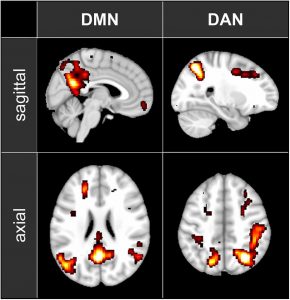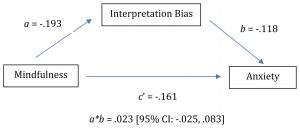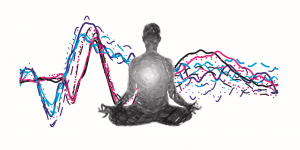Improve Autonomic Nervous System Function with Yogic Breathing
By John M. de Castro, Ph.D.
“The Bhramari pranayama breathing practice . . . .. is beneficial and instantly calming down the mind. It is one of the best breathing exercises to free the mind of distress, anxiety, or frustration and get rid of anger to a great level.” – Alpesh Jain
Breathing is essential for life and generally occurs automatically. It’s easy to take for granted as it’s been there our entire lives. Nevertheless, we become more aware of it when it varies with circumstances, such as when we exercise and also in emotional states, especially fear and anxiety. But we rarely notice it during everyday ongoing life. Yet, its characteristics are associated with our state of well-being. Slow deep breathing is characteristic of a healthy relaxed state. Breathing exercises are common in yoga practices and have been found to have a number of beneficial effects. Bhramari pranayama (Bee breathing) is a yogic breathing practice that adopts simple regulation of voluntary breathing involving an exhalation that simulates the typical humming sound of a bee.
Adolescence is a time of mental, physical, social, and emotional growth. It is during this time that higher levels of thinking, sometimes called executive function, develops. But adolescence can be a difficult time, fraught with challenges. During this time the child transitions to young adulthood; including the development of intellectual, psychological, physical, and social abilities and characteristics. There are so many changes occurring during this time that the child can feel overwhelmed and unable to cope with all that is required. It is not known whether training in Bhramari pranayama can be beneficial for adolescents.
In today’s Research News article “Effects of yoga breathing practice on heart rate variability in healthy adolescents: a randomized controlled trial.” (See summary below or view the full text of the study at: https://www.ncbi.nlm.nih.gov/pmc/articles/PMC6997567/), Kuppusamy and colleagues recruited healthy adolescents, 13-18 years of age, and randomly assigned them to either Bhramari pranayama (Bee breathing) or no treatment. Yogic breathing was practiced in the morning for 30 minutes, 5 days per week for 6 months. The participants electrocardiogram (ECG) was measured at rest before and after training.
With the ECG they found that in comparison to baseline and the no-treatment control participants, the adolescents who practiced yogic breathing had significantly lower heart rates and significantly higher time and frequency domains of heart rate variability. Increased heart rate variability indicates greater activity of the parasympathetic division of the autonomic nervous system that is active during relaxation. Hence, the findings suggest that practicing yogic breathing improves autonomic function.
Increased heart rate variability is associated with lower stress and greater health and longevity and psychological well-being. Hence, increased heart rate variability in the adolescents who practiced Bhramari pranayama (Bee breathing) is an indicator of improved autonomic function that underlies greater health and well-being. This suggests that practicing yogic breathing would improve the youth’s ability to develop healthily during the turbulent times of the teen years.
So, improve autonomic nervous system function with yogic breathing.
“The noise of bhramari’s buzzing can drown out the endless mental tape loops that can fuel emotional suffering, making it a useful starting point for those whose minds are too “busy” to meditate.” – Timothy McCall
CMCS – Center for Mindfulness and Contemplative Studies
This and other Contemplative Studies posts are also available on Google+ https://plus.google.com/106784388191201299496/posts and on Twitter @MindfulResearch
Study Summary
Kuppusamy, M., Kamaldeen, D., Pitani, R., Amaldas, J., Ramasamy, P., Shanmugam, P., & Vijayakumar, V. (2020). Effects of yoga breathing practice on heart rate variability in healthy adolescents: a randomized controlled trial. Integrative medicine research, 9(1), 28–32. https://doi.org/10.1016/j.imr.2020.01.006
Abstract
Background
This study was conducted among healthy adolescents to assess the effects of a yoga breathing practice (Bhramari pranayama, Bhr.P) towards cardiac autonomic function using heart rate variability (HRV) parameters.
Methods
Of the 730 eligible subjects screened, 520 healthy adolescents who met the inclusion and exclusion criteria were randomly assigned to either yoga breathing group (n = 260) or control group (n = 260). The yoga breathing group practiced Bhr.P. five days a week for a duration of six months while the control group continued with their daily routine without any intervention. Outcome measures were time and frequency domain of HRV in both groups which were assessed before and after the intervention using Lead II ECG. Linear models were used in the analysis of short term HRV.
Results
After 6 months of yoga breathing, the time domain parameters of short term HRV showed significant (P < 0.05) improvement towards the parasympathetic domain. Frequency domain parameters also showed the same direction of changes. In contrast, control group subjects showed a trend towards a sympathetic domain.
Conclusion
The present study showed a positive shift in cardiac autonomic modulation towards parasympathetic predominance after 6 months of yoga breathing practice among apparently healthy adolescents.
https://www.ncbi.nlm.nih.gov/pmc/articles/PMC6997567/









